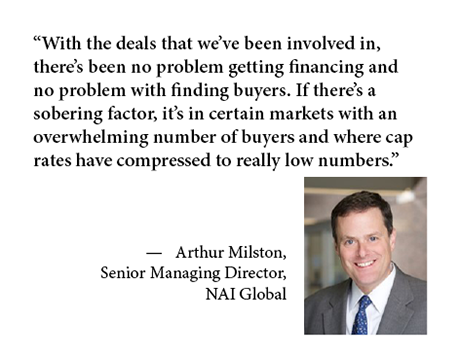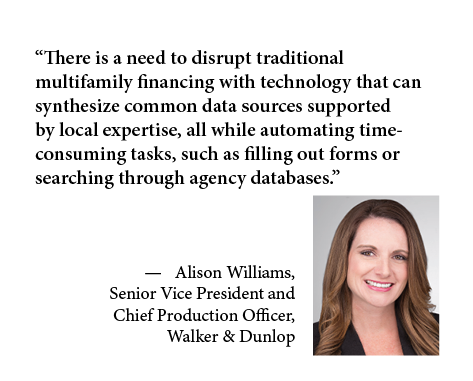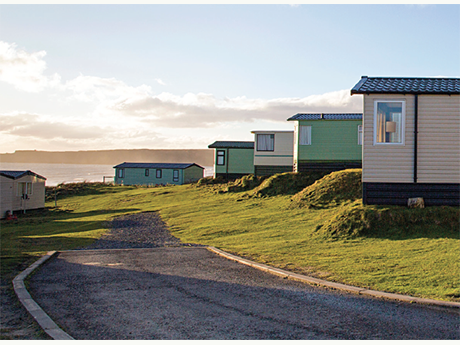The multifamily investment sales sector had well-documented success in 2021 with a record volume of over $220 billion in transaction activity. Factors driving competition for transactions within the sector included: increasing home prices, widespread interest in renting and the easing of COVID-19 restrictions bringing renters back into the nation’s cities, all of which drove the average, nationwide multifamily occupancy rate above 97 percent. With firmly rooted fundamentals, investor interest across the spectrum of multifamily has been intense. Traditionally popular core investment products (stabilized and value-add assets located in primary and secondary markets) were the clear winners with investors. Some multifamily REIT stocks increased by 75 to 100 percent in 2021, explains Arthur Milston, senior managing director with NAI Global and co-head of the company’s Capital Markets Group. Milston sat down with REBusinessOnline to explain where NAI Global sees growth and opportunities in 2022. REBusiness: Who are the primary investor groups acquiring multifamily? What types/locations are they attracted to? Milston: Historically, multifamily has always had very fragmented ownership compared to other asset classes. Currently, the dominant players are the large aggregators of product, whether it be REITs or institutional investors that are buying, typically in conjunction with an operating partner. Pension …
Content Partner
The small balance multifamily lending industry is antiquated, leaving thousands of prospective borrowers behind in a booming market. Multifamily property owners need access to fast, reliable quotes and a streamlined approach to financing. The current industry practice of quoting from rate sheets does not present a holistic or dynamic picture for borrowers or lenders. Walker & Dunlop is offering an alternative approach with a new digital lending platform that utilizes machine learning to quickly provide customized quotes for small balance multifamily acquisition and refinance loans. The rapid pace of lending means that borrowers need strategic partnerships with small balance loan experts that provide personalized customer experience backed by the data science capabilities to pull comparables, as well as online tools that can both streamline and inform processes. Sponsored: As the #1 multifamily lender in the U.S., Walker & Dunlop is launching a digital lending platform that will deliver tailored quotes in minutes for acquisitions and refinances. The platform uses machine learning powered by millions of data points from Walker & Dunlop’s proprietary property database to offer clients accuracy, transparency and confidence from kickoff to closing. The State of Small Balance Lending Small multifamily properties account for roughly 85 percent of …
Content PartnerDevelopmentFeaturesLeasing ActivityMidwestMultifamilyNortheastSoutheastTexasWalker & DunlopWestern
2021 Multifamily Housing Market Outlook Shaped by Growth Trends, Housing Prices
COVID Disrupts Markets Again The country began breathing a sigh of relief in the second quarter of 2021 as U.S. GDP returned to pre-pandemic levels. With a substantial part of the U.S. population vaccinated, the unemployment rate plummeted, schools began preparing for in-person instruction and restaurants were back in business, again surpassing grocery sales in volume. But just as things seemed to be returning to “normal,” the delta variant of COVID began to spread. New COVID cases turned into rising COVID deaths by August,[1] disrupting supply and demand chains. Consumer confidence, which had been rising since hitting a low in April 2020, dipped to a new low point in August; consumer spending stalled[2], and fewer people traveled by plane[3] or returned to the office[4] that month. While economic growth remains positive, the delta variant, now accounting for almost all new COVID cases[5], again introduced market uncertainty, resulting in a 4 percent drop in stock market pricing in September. However, as COVID cases began declining in mid-September, stock prices began to rise, erasing the September drop in October, and resulting in a 22.6 percent gain for the year. Overall, economists maintain strong economic growth expectations of 6.1 percent GDP growth for …
AcquisitionsBuild-to-RentContent PartnerFeaturesLeasing ActivityMidwestMultifamilySingle-Family RentalSoutheastTexasWalker & DunlopWestern
Multifamily Investment Sales Strong in Southern States; Gaining More Interest in Midwest
Multifamily investment benefitted from the uncertainties of the past year, but will the transaction volumes of 2021 be used to gauge the likely outcomes for 2022? Managing directors Todd Stofflet and Jason Stevens of Walker & Dunlop’s Chicago office review 2021 and what the trends of this year indicate for the direction of the industry. REBusiness: What have you seen regarding multifamily investment activity this year? Stofflet: Early in the pandemic, we saw a lot of investment pull away from retail and office, focusing more on industrial and multifamily. In 2021, the multifamily sector has fared very well and a lot of new investors have entered the multifamily market. If you talk to some of our colleagues in the Southeast and the “smile states,” they will tell you that transaction volume has never been higher and the amount of capital chasing these opportunities has never been bigger. Across the country, it has been a very strong year for the sector. REBusiness: Do you think 2021 will be a record year in terms of sales? Stevens: If our pipeline is any barometer for that, the answer is “absolutely,” but it will be market dependent. What you’ll find is that sales in …
When the pandemic engulfed the world last year, few analysts predicted that the multifamily sector would flourish and thrive so well. Most suspected that the sector would be on life support. Yet, despite a year-long national eviction moratorium, there hasn’t been a better time to be a big apartment-building landlord. Multifamily-property values have increased 13 percent since before the pandemic and more money is being invested now in apartment buildings than in any other type of commercial real estate. How did this happen and what explains this? Lee & Associates’ research will delve into why the multifamily sector, contrary to past predictions and present-day misperceptions, is flourishing as never before. 1. Measured on an annual basis, national asking rents rose 10.3 percent in August. That marked the first double-digit increase in the more than 20 years the data of 13 million professionally managed apartments has been collected, and in several cities, the rent increases were much more significant than the national figure.[1] August rents rose more than 20 percent year-over-year in Phoenix, Las Vegas and Tampa. Similarly, monthly rents were up more than 20 percent in comparable markets such as Boise, Idaho and Naples, Florida. 2. Multiple factors explain this …
Mall and shopping center owners nationwide are faced with the vacancy of major big box anchors that have closed their doors due to the continued uptick in online retail and changing shopping habits and desires of today’s consumers. Often massive, these two-story, or even three-story spaces seem impossible to fill with the decline of most brick and mortar retail stores. Developers are being challenged to think outside the [big] box to find new tenants and creative uses for the space. Malls were originally thought of as community centers for neighborhoods during the mall boom. That attitude fell by the wayside as malls removed their socially engaging aspects and lost their sense of place — instead of being a place for the community to gather, the mall became simply a place to shop. Now, largely expedited by the pandemic, there have been seismic shifts in retail and shopper habits/what the consumer wants out of their shopping experience. The key word here is experience. Malls have had to readapt to fill in vacant spaces from large department stores that consumers no longer favor. This has opened up a lot of atypical uses, from distribution centers to residential to entertainment components to medical facilities. …
Build-to-RentContent PartnerDevelopmentFeaturesMidwestMultifamilyNortheastSoutheastTexasWalker & DunlopWestern
Demographic, Economic Trends Likely to Sustain Build-For-Rent Sector’s Growth
Institutional investors have been increasingly interested in the build-for-rent (BFR) space over the last five years. But the pandemic poured gasoline on an asset class that offers tenants space, privacy and the flexibility of renting. Now that COVID appears to be receding in some areas, can the BFR sector maintain its growth? Paul Garner, director at Walker & Dunlop, believes that demographic and economic trends will maintain the demand for BFR, especially in the Sun Belt states, for the near future. Opportunities for Growth and a Focus on the Sun Belt Garner sees the most potential for BFR growth in suburban areas — particularly those located 15 to 20 minutes outside of a metropolitan statistical area. The economic growth and increasing populations of nearby cities determine whether suburban BFR setups will attract tenants. According to Garner, the dedicated BFR/single-family rental (SFR) team at Walker & Dunlop has started to see a lot of action similar to what they saw on the West Coast (especially in Arizona) four or five years ago. He notes, “BFR properties are becoming increasingly popular all throughout the Sun Belt states, especially Florida and the Carolinas. There’s a potential in this area to get land very, …
Content PartnerDevelopmentFeaturesHeartland Feature ArchiveHospitalityIndustrialLeasing ActivityLee & AssociatesMarket ReportsMidwestMultifamilyNortheastNortheast Feature ArchiveOfficeRetailSoutheastSoutheast Feature ArchiveTexasTexas & Oklahoma Feature ArchiveWesternWestern Feature Archive
Lee & Associates Breaks Down Third-Quarter Economic Outlook by Sector
The calculus for which asset classes are likeliest to demonstrate strong growth continues to shift as the pandemic appears to be receding. Patterns in labor shortages, supply chain issues and material costs have managed to solidify through the third quarter of 2021. Lee & Associates’ newly released Q3 2021 North America Market Report dissects third-quarter 2021 industrial, office, retail and multifamily findings, with a focus on where demand is moving and the challenges facing each asset class. Lee & Associates has made the full market report available at this link (with further breakdowns of factors like vacancy rates, market rents, inventory square footage and cap rates by city). Below is a bird’s-eye overview of four commercial real estate asset classes as general categories, broken down to frame each through the trends and complications they faced up to the fourth quarter, according to Lee & Associates’ research. Industrial: Q3 Posts More Record Demand Pandemic-fueled consumer spending drove up third-quarter demand for warehouse and distribution facilities that eclipsed previous records. And despite a nationwide surge in new construction, some metros can barely accommodate the pace of tenant expansion. Additionally, year-over-year rent growth is at a record 6.7 percent for the industrial property sector …
AcquisitionsContent PartnerFeaturesLeasing ActivityLoansMidwestMultifamilyNortheastSingle-Family RentalSoutheastTexasWalker & DunlopWestern
Small-Balance Multifamily: Sizable and Resilient
While new-builds and top-of-the-line, large-scale developments typically attract the most buzz in the multifamily world, the vast majority of apartment properties in the United States have fewer than 100 units. These smaller properties play a vital role in delivering affordable and workforce rental housing inventory to the U.S. population. While the commercial real estate industry may refer to this sector of the multifamily market as “small,” make no mistake, “small” multifamily is not insignificant or inferior — it’s sizable and resilient. As other commercial real estate sectors paused during COVID-19, smaller multifamily properties and small-balance lending thrived. What does the future hold for this market? The Small Multifamily Market Defined The small multifamily market is highly fragmented with no clear definition of what constitutes “small” among capital sources. Generally, market statistics define the “small” multifamily sector by at least one of two measures: Unit count between five and 99 units; and/or Principal loan balance at origination between $1 million and $10 million[1] Strong Demand and Operating Fundamentals While the pandemic negatively impacted many areas of commercial real estate, with offices, retail shops and hotels largely shuttered across the U.S., the multifamily market remained resilient. Despite the past year’s challenges, multifamily …
Affordable HousingContent PartnerFeaturesLumentMidwestMultifamilyNortheastSingle-Family RentalSoutheastTexasVideoWestern
Manufactured Housing Communities Garner Investor Interest
Interest in affordable paths to homeownership and the growing popularity of lower density living are raising the profile of the manufactured housing option among American households and investors. At the same time, the government sponsored enterprises (GSEs) Fannie Mae and Freddie Mac are making concerted efforts to better serve this historically underfinanced market at both the individual homeowner and community levels. The combination of robust cash flow growth (particularly in Sunbelt and Western markets), cap rate compression, and liquidity provided by the GSEs makes a compelling case for manufactured housing community (MHC) acquisitions and refinances. As increased competition has left market participants looking for an edge amidst compressing cap rates, the importance of working with an experienced MHC lender with access to short- and long-term loan programs has become more apparent. The following provides an in-depth analysis of the recent performance of rental MHCs, sales volume and pricing trends, and loan and underwriting trends in the MHC space. The Performance of the Site Rental Market The COVID-19 pandemic affected American housing preferences in profound ways. Increasingly, households are seeking lower density options with larger floor plans, home offices, and dedicated space for entertaining or distanced learning. This phenomenon …











